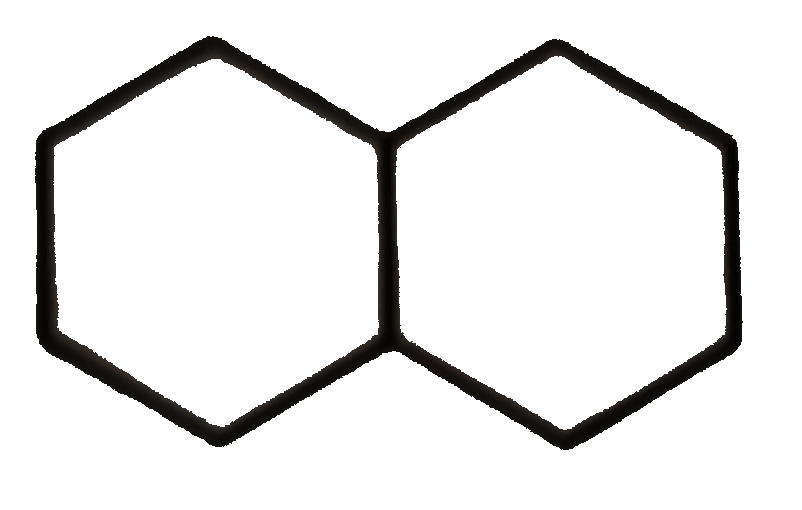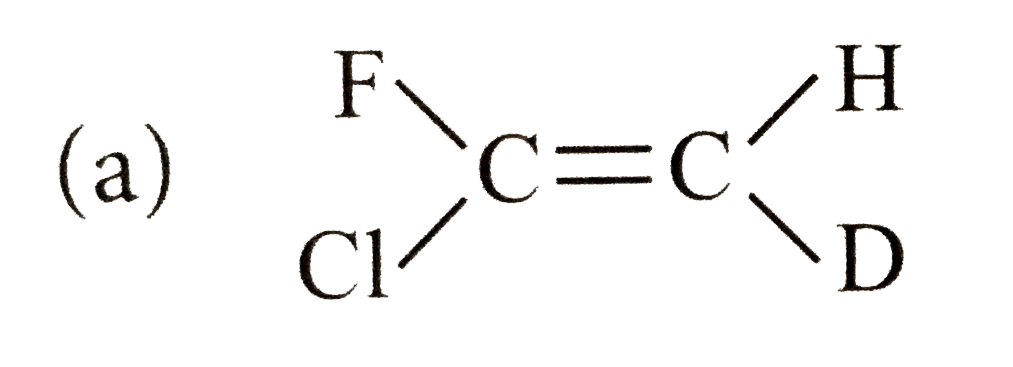Which of the following will show geometrical isomerism ?
CH3−C2H5∣C=CH2
[Pt(NH3)2Cl2]
[Cr(NH3)4Cl2]⊕

The correct Answer is:B, C, D
To determine which of the given compounds exhibit geometrical isomerism, we will analyze each option step by step.
Step 1: Understand Geometrical Isomerism
Geometrical isomerism, also known as cis-trans isomerism, occurs in compounds with restricted rotation around a bond, typically a double bond or in certain coordination complexes. It arises when two or more substituents are arranged differently in space.
Step 2: Analyze Each Option
Option A: C=C H H CH3 C2H5
- This compound has a double bond between two carbon atoms (C=C).
- The substituents on the double bond are H, H, CH3, and C2H5.
- Since both substituents on one carbon are the same (H and H), this compound cannot exhibit geometrical isomerism.
- Conclusion: Does not show geometrical isomerism.
Option B: Pt(NH3)2Cl2
- This is a square planar complex.
- The structure can be represented as:
Cl|NH3−Pt−NH3|Cl
- In this arrangement, the two Cl groups can be on the same side (cis) or on opposite sides (trans).
- Conclusion: Shows geometrical isomerism.
Option C: (Cr(NH3)4Cl2)+
- This is an octahedral complex.
- The possible arrangements can be:
1. Both Cl groups on the same side (cis).
2. Both Cl groups on opposite sides (trans).
- The structure can be visualized as:
NH3|NH3−Cr−Cl|Cl∣NH3
- Conclusion: Shows geometrical isomerism.
Option D: C2H4Cl2
- This compound has a double bond between two carbon atoms.
- The substituents are Cl and H on each carbon.
- The two Cl atoms can be on the same side (cis) or on opposite sides (trans).
- Conclusion: Shows geometrical isomerism.
Final Conclusion
The compounds that show geometrical isomerism are:
- Option B: Pt(NH3)2Cl2
- Option C: (Cr(NH3)4Cl2)+
- Option D: C2H4Cl2
Summary of Results
- Option A: Does not show geometrical isomerism.
- Option B: Shows geometrical isomerism.
- Option C: Shows geometrical isomerism.
- Option D: Shows geometrical isomerism.
Final Answer
Options B, C, and D show geometrical isomerism.
---
Geometrical isomerism, also known as cis-trans isomerism, occurs in compounds with restricted rotation around a bond, typically a double bond or in certain coordination complexes. It arises when two or more substituents are arranged differently in space.
- This compound has a double bond between two carbon atoms (C=C).
- The substituents on the double bond are H, H, CH3, and C2H5.
- Since both substituents on one carbon are the same (H and H), this compound cannot exhibit geometrical isomerism.
- Conclusion: Does not show geometrical isomerism.
- This is a square planar complex.
- The structure can be represented as:
Cl|NH3−Pt−NH3|Cl
- In this arrangement, the two Cl groups can be on the same side (cis) or on opposite sides (trans).
- Conclusion: Shows geometrical isomerism.
- This is an octahedral complex.
- The possible arrangements can be:
1. Both Cl groups on the same side (cis).
2. Both Cl groups on opposite sides (trans).
- The structure can be visualized as:
NH3|NH3−Cr−Cl|Cl∣NH3
- Conclusion: Shows geometrical isomerism.
- This compound has a double bond between two carbon atoms.
- The substituents are Cl and H on each carbon.
- The two Cl atoms can be on the same side (cis) or on opposite sides (trans).
- Conclusion: Shows geometrical isomerism.
The compounds that show geometrical isomerism are:
- Option B: Pt(NH3)2Cl2
- Option C: (Cr(NH3)4Cl2)+
- Option D: C2H4Cl2
- Option A: Does not show geometrical isomerism.
- Option B: Shows geometrical isomerism.
- Option C: Shows geometrical isomerism.
- Option D: Shows geometrical isomerism.
Options B, C, and D show geometrical isomerism.
Topper's Solved these Questions
- ISOMERISMBOOK - CENGAGE CHEMISTRY ENGLISHCHAPTER - ISOMERISMEXERCISE - Single correct answer type
13 Videos
- ISOMERISMBOOK - CENGAGE CHEMISTRY ENGLISHCHAPTER - ISOMERISMEXERCISE - Single correct answer type (Exercise)
65 Videos
- ISOMERISMBOOK - CENGAGE CHEMISTRY ENGLISHCHAPTER - ISOMERISMEXERCISE - (Linked Comprehension Type)Exercise
13 Videos
- IONIC EQUILIBRIUMBOOK - CENGAGE CHEMISTRY ENGLISHCHAPTER - IONIC EQUILIBRIUMEXERCISE - Archives Subjective
28 Videos
- NCERT BASED EXERCISEBOOK - CENGAGE CHEMISTRY ENGLISHCHAPTER - NCERT BASED EXERCISEEXERCISE - Chemical Equilibrium
73 Videos
Similar Questions
Knowledge Check
Which of the following will not show geometrical isomerism ?
A B
B C
C D
D
Which of the following will not show geometrical isomerism?
A B
B C
C D
D
Which of the following will not show geometrical isomerism ?
ACH3−C∣CH3=CH−CH2−CH3BCH3−CH∣CH3−CH=CH−CH2−CH3CCH3−CH=CH−CH3DCH3−CH2=CH−CH2−CH3
Which of the following will not show geometrical isomerism ?
View SolutionWhich of the following will not show geometrical isomerism?
View SolutionWhich of the following will not show geometrical isomerism?
View SolutionWhich of the following will not show geometrical isomerism?
View SolutionWhich of the following can show geometrical isomerism?
(i) Propene (ii) But-1-ene (iii) But-2-ene (iv) Pent-2-ene
View Solution

